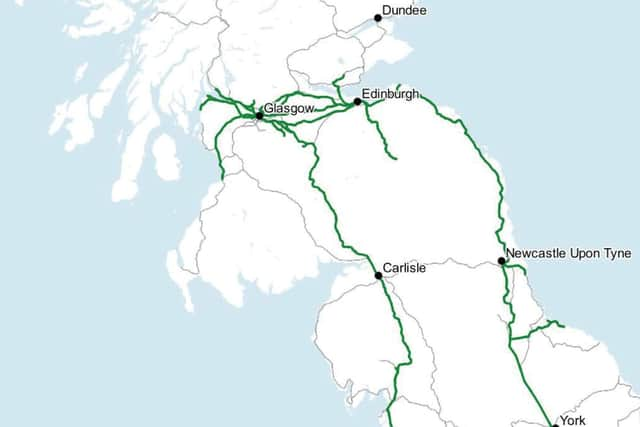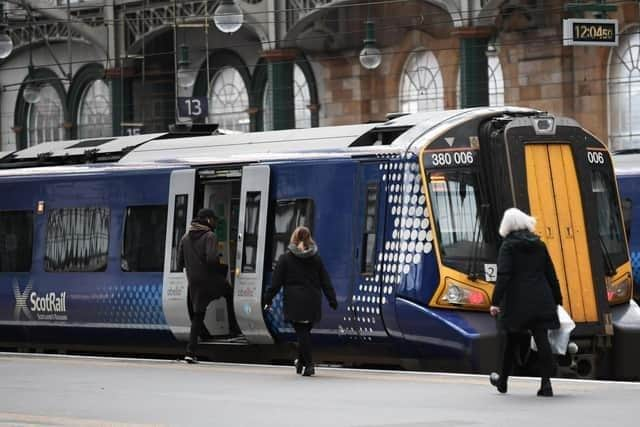Conservative and SNP governments in UK and Scotland must bury their differences to boost rail – Alastair Dalton
It is becoming a tale of two railways. There may be two lines crossing the Border, but the way the system is run on either side shows signs of an increasing divide – and I blame politics.
ScotRail, which runs the vast majority of trains within Scotland, has been part of the Scottish Government since 2022. But then LNER, the main east coast cross-Border operator, has been in UK Government hands for nearly six years.
Advertisement
Hide AdAdvertisement
Hide AdControl does not appear to be the issue, it’s how things are operated.


If you’re a passenger in England, you’ll still be enduring intermittent, but significant disruption from pay disputes that have dragged on for nearly two years. In Scotland, that’s thankfully receding into memory after deals were struck following major industrial unrest in both 2021 and 2022.
Likewise, travellers south of the Border faced across-the-board station ticket office closures until the plan was ditched by the UK Government in the autumn. By contrast, ScotRail announced far more limited plans, involving a few ticket office closures and reductions in the opening hours of most of the rest, and these appear to have been quietly shelved.
In the year of an expected general election, I can’t see how the SNP Scottish Government could now go ahead with these when its Tory counterpart at Westminster has closed the doors on the issue – at least for now.
There’s a third area of divergence that’s even more ideological, over the UK Government’s move to force train operators to run services during strikes. Clearly prompted by the chronic disruption, it’s been championed by Conservative ministers to the extent they have even included routes in Scotland where they’d like to see trains running during walkouts – even though this is a devolved matter.


I’m told the Scottish Government’s Transport Scotland agency has responded by paying lip service, apparently taking part in an industry consultation exercise over the so-called “minimum service levels” in listen-only mode. So despite what the UK Department for Transport’s map shows, during any future dispute commuters should not expect to see any trains running from the likes of Cowdenbeath, Helenburgh and Tweedbank.
UK transport secretary Mark Harper told the Scottish Conservatives party conference in April last year that he wanted to reset relations with his Scottish Government counterparts, talking about “sensible dialogue” while acknowledging there wouldn’t always be agreement. I wonder if that discussion counts.
Political differences threaten to fuel needless more bad news for the railways, albeit that could change this year if there’s a new resident in 10 Downing Street.
Advertisement
Hide AdAdvertisement
Hide AdThe remaining industrial disputes must get settled, and promptly, which would also keep the question of minimum service levels as a theoretical one.
The UK Government should also be more convincingly supportive of the big picture the Scottish Government appears to be already signed up to – that a prosperous and growing rail sector is vital for both economic growth and tackling the climate emergency. That means giving more people the confidence to give trains a try.
Comments
Want to join the conversation? Please or to comment on this article.